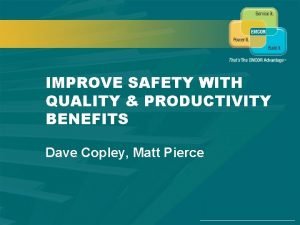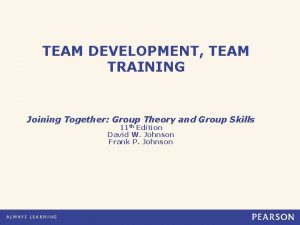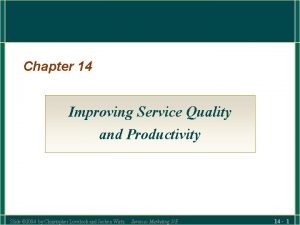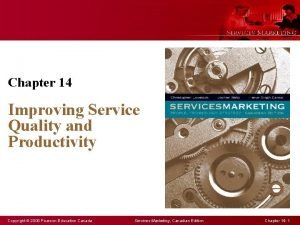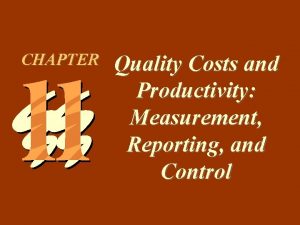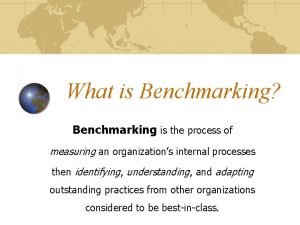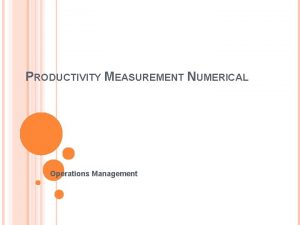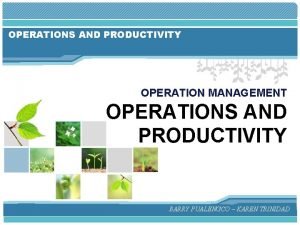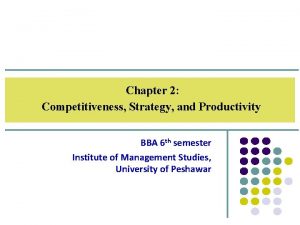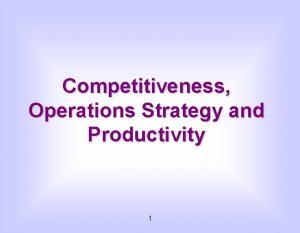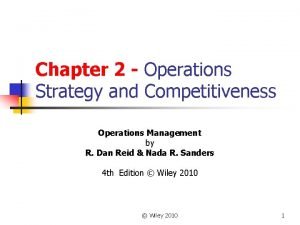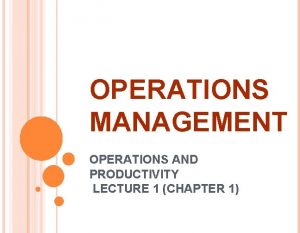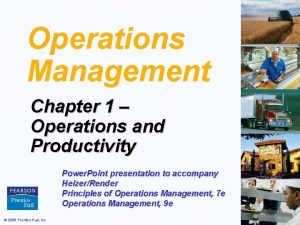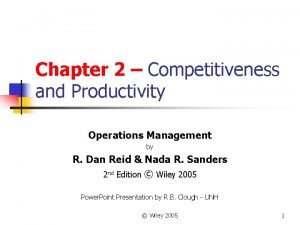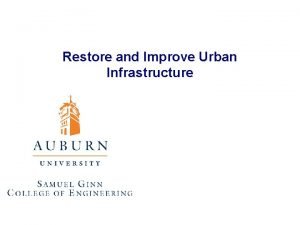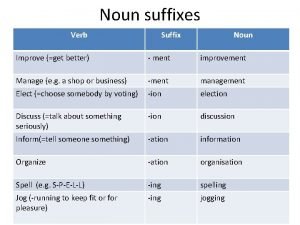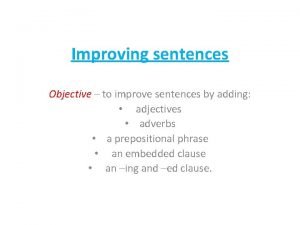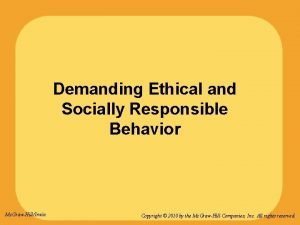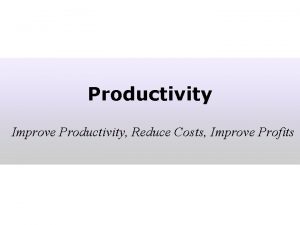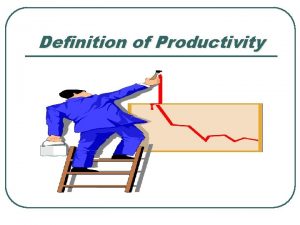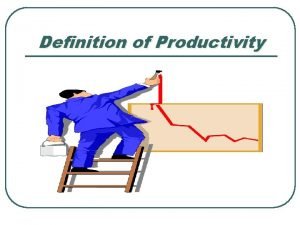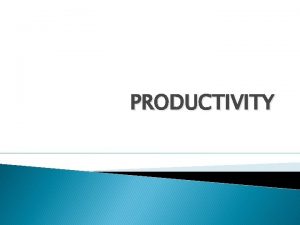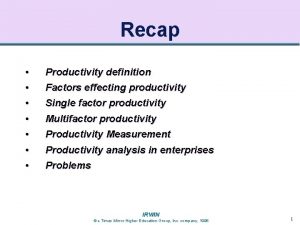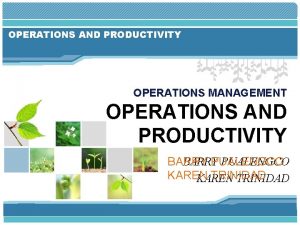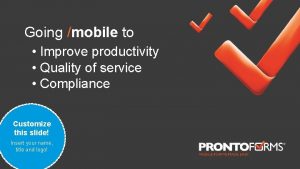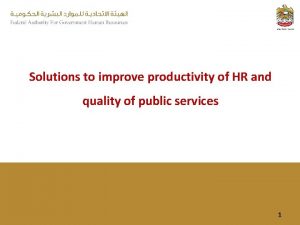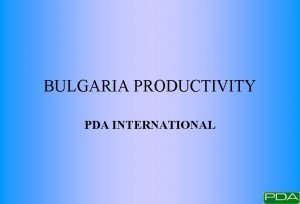SAFETY QUALITY MANAGEMENT IMPROVE SAFETY WITH QUALITY PRODUCTIVITY































- Slides: 31

SAFETY & QUALITY MANAGEMENT IMPROVE SAFETY WITH QUALITY & PRODUCTIVITY BENEFITS Dave Copley, Matt Pierce

Who Are We? SAFETY & QUALITY MANAGEMENT

Pirates Log SAFETY & QUALITY MANAGEMENT Accident Trend

Pirate Safety Management SAFETY & QUALITY MANAGEMENT • “Performance based” goal setting • Compliance based • Focus on retraining for corrective action • Single dimensional • Lack of risk based analysis • Management involved but not committed

Quality and Safety Combined in 2003 SAFETY & QUALITY MANAGEMENT • Changed arbitrary goal setting process • Introduced a zero accident program • Benchmarked total cost of accidents • Started to measure safety process capability • Partnered with stakeholders • Decisions and actions based on risk • Developed methods to engage management

Changed the Goal Setting Process SAFETY & QUALITY MANAGEMENT • Previous goal setting process was arbitrary – The more accidents an operation had, the lower the goal for the following year • A new goal was set, the same for all – ZERO • This changed the way everyone thought about safety required a new approach and

Introduced A Zero Accident Program SAFETY & QUALITY MANAGEMENT • Focus changed from compliance and correction to prevention • We changed the way we work • Management and Safety leaders educated in zero accident principles* • Zero accident tool kit distributed • New technology tools implemented *Construction Industry Institute (CII) findings Aug. 2001

Benchmark the “True” Cost of Accidents SAFETY & QUALITY MANAGEMENT • Models developed to calculate the true cost of accidents at group and Operating Company level • Soft costs are in the range of $2 - $20 for every $1 of direct costs • Business development cost included - estimated in rage of 2% - 8% of revenue • Burden per hour calculated in Operating Company model for comparison

The “True” Total Cost of Accidents SAFETY & QUALITY MANAGEMENT Workers Comp. Cost Benchmark Model* Workers Comp Cost (WCC) $15 Mil. x 5 New Business Required to fund WCC Cost of Funding New Business (to calculate other incurred losses) $75 Mil. x 10 $750 Mil. x 0. 02 (Assuming 10% margin) (2% business development) $75 Mil. $750 Mil. $15 Mil. Total Cost of Accidents $75 Mil. + $15 M $90 Mil. • This example represents $90 million in unbudgeted costs on the low end of the range. Costs could be >4 x higher. *Numbers are used for illustrative purposes only and represent the cost of claims exclusive of the cost of insurance premiums. Actual numbers are unique to all organizations and situations.

Cost Calculator Model SAFETY & QUALITY MANAGEMENT OSHA Rate: 3. 2

Measure Safety Process Capability SAFETY & QUALITY MANAGEMENT • Introduced Control Charts and plotted our Safety Process capability Process Capability: 64 – 93 accidents per month (1 s, 68%)

Partner With Other Stakeholders SAFETY & QUALITY MANAGEMENT • Insurance Carriers • External Consultants • Product Suppliers • Internal Interests

Outcome of Stakeholder Collaboration SAFETY & QUALITY MANAGEMENT Insurance Carriers: • Identification of key risks: Leading Accident Types by Cost 2003: Average Cost Per Accident: $12, 417

Outcome of Stakeholder Collaboration SAFETY & QUALITY MANAGEMENT Insurance Carriers: • Current trends and future risks related to our industry: Percent of U. S. Workforce Aged 45 -64 Source: 2000 US Census, workforce includes ages 18 -64

Outcome of Stakeholder Collaboration SAFETY & QUALITY MANAGEMENT External Consultants: • Future challenges based on industry knowledge and research: Source: US Bureau of Labor Statistics, US Department of Commerce

Outcome of Stakeholder Collaboration SAFETY & QUALITY MANAGEMENT Product Suppliers: • Innovative products and practices affecting our industry:

Outcome of Stakeholder Collaboration SAFETY & QUALITY MANAGEMENT Product Suppliers: • Innovative products and practices affecting our industry:

Outcome of Stakeholder Collaboration SAFETY & QUALITY MANAGEMENT Internal Interests: • Identified that management is more receptive to sharing practical work methods than standardization of work procedures • Peer to peer communication unreliable • The relationship between safety and productivity was not fully developed, communicated or understood • Although most thought that productivity could be improved very few had a plan or knew how to go about it

Resulting Successful Strategy SAFETY & QUALITY MANAGEMENT Engaging Management through: • Visitation – Refocusing of compliance efforts to selected Operating Company locations based on risk • Communication – Introduction of an array of professionally produced publications with an integrated message, targeting specific influencers in the organization • Education – Produced a presentation (road show) directed at key managers to be delivered at their location by the EMCOR road show team

Visitation SAFETY & QUALITY MANAGEMENT • Deployed new scheduling and reporting tool • Number of visits based on risk and performance

Communication SAFETY & QUALITY MANAGEMENT • Specifically Targeted Communities – – – – Management Financial Safety Quality Purchasing Fleet & Driver Business Continuity Planning Field

Education SAFETY & QUALITY MANAGEMENT • Packaged message into a 3 hr. road show presented to top management • Started April 2005 • 45 locations visited to date • 18 return visits by request • 1, 000’s of key people educated

Road Show Content SAFETY & QUALITY MANAGEMENT • Safety Business Case • Motion is Money • Productivity Plus

Results – Fewer Accidents Every Year SAFETY & QUALITY MANAGEMENT

Results – Better Safety Process SAFETY & QUALITY MANAGEMENT New Process Capability: 56 – 76 accidents per month (1 s, 68%)

Results – Improving Rates SAFETY & QUALITY MANAGEMENT Incident Rates and DART Rates are Falling *Calculated figure based on YTD performance

Results – Better Production Capacity SAFETY & QUALITY MANAGEMENT 2004 -2006 – 20, 954 Days Returned to Production 14, 069 14, 827 7, 636 2003 2004 2005 2006 (Est. ) (51. 9 M hrs. ) (50. 9 M hrs. ) (55. 5 M hrs. ) (56. 5 M hrs. )

Conclusion SAFETY & QUALITY MANAGEMENT • Relationship between safety, quality and productivity better understood across the organization • Peer to peer communication platform established • Focus changed from corrective to preventive action • We have started to change the way we work: – – Safety performance is improving Production capacity is increasing Workers compensation cost is declining Purchasing for productivity is improving

Results – Reversing The Trend SAFETY & QUALITY MANAGEMENT

The Future – Working Together SAFETY & QUALITY MANAGEMENT

SAFETY & QUALITY MANAGEMENT The End
 Relationship between safety, quality and productivity
Relationship between safety, quality and productivity Joining together as a team to improve the quality
Joining together as a team to improve the quality Improving service quality and productivity ppt
Improving service quality and productivity ppt Service quality and productivity
Service quality and productivity Cost of quality examples
Cost of quality examples Benchmarking example
Benchmarking example How to measure productivity in operations management
How to measure productivity in operations management Multifactor productivity operations management
Multifactor productivity operations management Competitiveness, strategy and productivity
Competitiveness, strategy and productivity Operations strategy and competitiveness
Operations strategy and competitiveness Productivity and competitiveness in operations management
Productivity and competitiveness in operations management Operations management productivity problems
Operations management productivity problems Labor productivity formula
Labor productivity formula Productivity definition in operations management
Productivity definition in operations management Operations and quality management
Operations and quality management Contemporary issues in supply chain management ppt
Contemporary issues in supply chain management ppt What is tqm
What is tqm Decision making to improve marketing performance
Decision making to improve marketing performance Improve memory latency
Improve memory latency Intrapersonal and interpersonal difference
Intrapersonal and interpersonal difference Ways to improve urban infrastructure
Ways to improve urban infrastructure Current ratio high or low better
Current ratio high or low better Adjective
Adjective Noun suffixes advertise
Noun suffixes advertise How to improve psychomotor skills
How to improve psychomotor skills You are what you measure quote
You are what you measure quote Kiss method keep, improve, start stop
Kiss method keep, improve, start stop Improving software economics in software project management
Improving software economics in software project management Boring sentences to improve
Boring sentences to improve Call 3 hali
Call 3 hali To improve america's business ethics:
To improve america's business ethics: How to improve current ratio
How to improve current ratio
